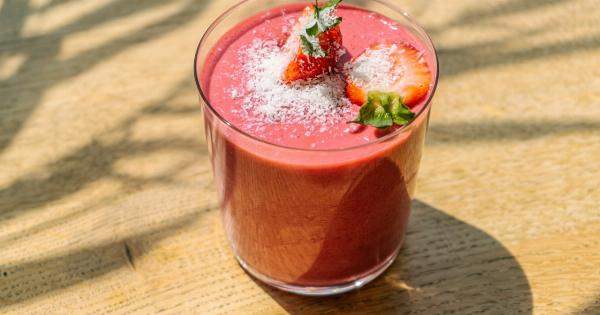Hydrotherapy, also known as water therapy, is a centuries-old practice that utilizes water in various forms to promote health, well-being, and enhance healing.
This therapeutic approach has gained popularity in recent years due to its multitude of benefits for both the mind and body. From hot tubs and saunas to cold showers and swimming, hydrotherapy offers a diverse range of techniques that can positively impact overall wellness.
What is Hydrotherapy?
Hydrotherapy is a holistic healing method that involves the use of water at different temperatures and pressures to stimulate blood circulation, reduce muscle tension, and alleviate pain.
It is based on the principle that water can have a profound effect on the body, bringing about therapeutic benefits and enhancing the natural healing processes.
The Benefits of Hydrotherapy
1. Stress Relief: One of the primary benefits of hydrotherapy is its ability to promote relaxation and reduce stress.
The warm water in hot tubs and saunas, along with the gentle massage from jets and bubbles, helps to release tension and create a calming environment.
2. Improved Blood Circulation: Hydrotherapy can enhance blood flow throughout the body, improving the delivery of oxygen and nutrients to cells and tissues.
This increased circulation can aid in healing injured areas and supporting overall cardiovascular health.
3. Muscle and Joint Pain Relief: Hydrotherapy is found to be effective in reducing muscle soreness, joint stiffness, and arthritis pain. The warm water helps to soothe aching muscles and joints by increasing blood flow and promoting relaxation.
4. Detoxification: The sweating induced by hot baths, saunas, and steam rooms helps to eliminate toxins from the body through the skin. This natural detoxification process can enhance overall well-being and contribute to healthy skin.
5. Improved Sleep: Hydrotherapy can help in achieving better sleep quality by inducing relaxation and relieving muscle tension. This, in turn, can lead to improved overall sleep patterns and help combat insomnia.
6. Enhanced Immune System: Regular use of hydrotherapy techniques can boost the immune system’s function by increasing blood circulation, promoting detoxification, and reducing stress.
A healthy immune system is essential for overall well-being and disease prevention.
7. Weight Management: Hydrotherapy can aid in weight management efforts by promoting relaxation and reducing stress-related eating.
Additionally, the hydrostatic pressure in water offers resistance during exercise, contributing to calorie burning and muscle toning.
8. Improved Mental Health: Engaging in hydrotherapy can have a positive impact on mental health by reducing anxiety, depression, and promoting a sense of well-being.
The soothing nature of water and the release of endorphins during hydrotherapy contribute to improved mental well-being.
9. Faster Injury Recovery: Hydrotherapy techniques, such as hot and cold water immersion, can accelerate injury recovery by reducing inflammation, relieving pain, and promoting tissue healing.
Coldwater immersion is particularly beneficial for acute injuries, while hot water therapy is effective for chronic conditions.
10. Improved Skin Health: Hydrotherapy techniques that involve alternating hot and cold temperatures can improve skin health and complexion.
These temperature variations help to stimulate blood circulation, flush out toxins, and promote collagen production.
Types of Hydrotherapy Techniques
1. Hot Tubs and Jacuzzis: Hot tubs and Jacuzzis provide warm water immersion, often with jets that can offer massage and relaxation. The heat from the water helps to increase blood flow, reduce muscle tension, and promote mental well-being.
2. Saunas and Steam Rooms: Saunas and steam rooms create a dry heat environment that causes sweat production. This sweating helps to eliminate toxins from the body, relieve muscle tension, and promote relaxation.
3. Cold Showers and Plunge Pools: Cold showers and plunge pools involve the use of cold water for therapeutic benefits. Coldwater immersion can promote faster recovery, reduce inflammation, and invigorate the body.
4. Contrast Hydrotherapy: Contrast hydrotherapy involves alternating between hot and cold water applications to stimulate blood circulation, boost the immune system, and reduce muscle soreness. This technique can be done through showers, baths, or wraps.
5. Water Exercises: Water exercises, such as swimming, aqua aerobics, and water yoga, combine the benefits of hydrotherapy with physical activity. The resistance offered by water enhances muscle strength, cardiovascular fitness, and overall well-being.
Incorporating Hydrotherapy into Your Routine
Hydrotherapy techniques can be easily incorporated into one’s daily routine, offering a convenient way to experience their benefits. Here are a few tips to get started:.
1. Create a Relaxing Environment: Set up a dedicated space for hydrotherapy practices, such as a hot tub, sauna, or even a cold shower area. Create a soothing ambiance with soft lighting, calming music, and scented candles to enhance the experience.
2. Establish a Regular Routine: Incorporate hydrotherapy sessions into your weekly schedule. Aim for at least a few sessions per week to reap the full benefits. Consistency is key to experiencing long-term positive effects.
3. Start Slowly: If you are new to hydrotherapy, start with shorter sessions, gradually increasing the duration and intensity as your body gets accustomed to the techniques. Listen to your body and adjust accordingly.
4. Combine Techniques: To maximize the benefits, consider combining different hydrotherapy techniques. For example, follow a hot tub session with a cold shower to experience the invigorating effects of contrast hydrotherapy.
5. Seek Professional Advice: If you have any underlying health conditions or concerns, it’s wise to consult with a healthcare professional before starting hydrotherapy practices. They can provide guidance based on your specific needs.
Conclusion
Incorporating hydrotherapy into your wellness routine can be a transformative experience for your health and well-being.
Whether it’s soaking in a hot tub, indulging in a sauna session, or embracing the invigorating power of cold showers, hydrotherapy offers a wide range of benefits that promote relaxation, stress relief, improved circulation, pain relief, and enhanced overall wellness. It’s time to tap into the power of water and unlock the healing potential it holds.


























